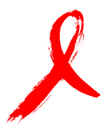|
Return
to 2012 Comprehensive Plan
What
is the Comprehensive Plan?
How
the Plan was
Developed
Implementation
Ten
Things You Can Do!
Dashboard
Downloads
(pdf)
How
are We Doing?
Treatment
Cascade
Links
to Other Initiatives and Plans
|
|
|

|
Houston Area Comprehensive
HIV Prevention and Care Services Plan
for 2012 through 2014
Capturing
the community’s vision for an ideal system of HIV
prevention and care for the Houston Area |
What
is the Comprehensive Plan?
Purpose
In
July 2012, the Ryan White Planning
Council and the Houston
HIV Planning Group
released the Houston Area Comprehensive HIV Prevention and Care Services
Plan (2012 – 2014). The purpose of the plan is to:
-
Describe
the current system of HIV prevention and care services in the Houston
Area;
-
Describe
an ideal system of HIV prevention and care services for the Houston
Area;
-
Outline
the specific activities needed to make progress toward this ideal
system; and
-
Describe
how progress toward an ideal system will be measured.
The
plan is intended to be used by the Ryan White Planning Council and the
Houston HIV Planning Group, by Administrative Agents and grantees, by
providers of HIV prevention and care services as well as by partners,
stakeholders, and other decision-makers as they respond to the needs of
people at risk for or infected with HIV.
Vision
The
greater Houston Area will become a community with a coordinated system of
HIV prevention and care, where new HIV infections are rare, and, when they
do occur, where every person, regardless of age, gender, race/ethnicity,
sexual orientation, gender identity, or socio-economic
circumstance, will have unfettered access to high-quality,
life-preserving care, free of stigma and discrimination.
Mission
The
mission of the 2012-2014 Houston Area Comprehensive HIV Prevention and Care
Services Plan
is to work in partnership with the community to provide an effective system
of HIV prevention and care services that best meets the needs of populations
infected with, affected by, or at risk for HIV.
Goals
To make progress toward an ideal system of HIV prevention and care for the
Houston Area, we must:
-
Mobilize
the Greater Houston Area Community Around HIV
-
Prevent
New HIV Infections Through Both Prevention and Treatment Strategies
-
Ensure
that All People Living With or At Risk for HIV Have Access to Early and
Continuous HIV Prevention and Care Services
-
Reduce
the Effect of Co-Occurring Conditions that Hinder HIV Prevention
Behaviors and Adherence to Care
-
Reduce
Disparities in the Houston Area HIV Epidemic and Address the Needs of
Vulnerable Populations
-
Achieve
a More Coordinated and Expansive HIV System that is Prepared for Health
Care System Changes
Objectives
By
2014, we hope to accomplish the following:
-
Reduce
the number of new HIV infections diagnosed in the Houston Area by 25
percent (from 1,029 to 771).
-
Maintain
and, if possible, increase the percentage of individuals with a positive
HIV test result identified through targeted HIV testing who are informed
of their HIV+ status (beginning at 92.9 percent with the goal of 100
percent).
-
Increase
the proportion of newly-diagnosed individuals linked to clinical HIV
care within three months of their HIV diagnosis to 85 percent (from 65.1
percent).
-
Reduce
the percentage of new HIV diagnoses with an AIDS diagnosis within one
year by 25 percent (from 36.0 percent to 27.0 percent).
-
Increase
the percentage of Ryan White HIV/AIDS Program clients who are in
continuous HIV care (at least two visits for HIV medical care in 12
months at least three months apart) to 80 percent (from 78.0 percent).
-
Reduce
the proportion of individuals who have tested positive for HIV but who
are not in HIV care by 0.8 percent each year (beginning at 30.1 percent)
as determined by the Ryan White HIV/AIDS Program Unmet Need Framework.
-
Increase
the proportion of Ryan White HIV/AIDS Program clients with undetectable
viral load by 10 percent (from 57.0 percent to 62.7 percent).
-
Reduce
the number of reports of barriers to accessing Ryan White HIV/AIDS
Program-funded Mental Health Services and Substance Abuse Services by
27.3 percent and 43.7 percent, respectively (from 117 reports to 85
reports for Mental Health Services; and from 58 reports to 32 reports
for Substance Abuse Services).
|
